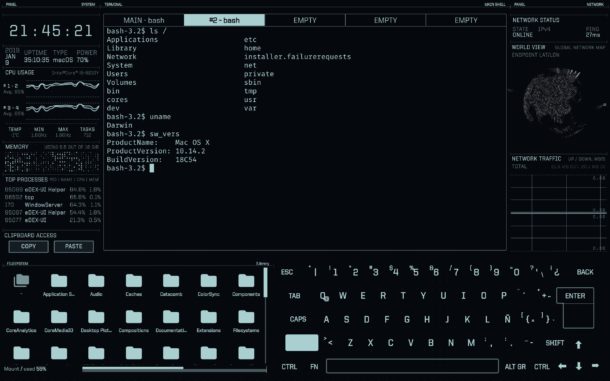The Stupidest Scientist Mac OS
The Stupidest Scientist Mac OS
Apple patched what noted Mac security researcher Patrick Wardle described to SC Media as “the worst macOS bug in recent memory.” An adware group had already been using the bug in the wild.
- The Stupidest Scientist Mac Os 11
- The Stupidest Scientist Mac Os X
- The Stupidest Scientist Mac Os Download
- The Stupidest Scientist Mac Os Catalina
The font on every email was so small, I was going to need the Hubble telescope just to answer my morning mail. After an hour, I could feel the pressure in my eyes, the vessels constricting. To make the Mac program livable, I increased the font to 16 point, then continued writing emails to military sources. That night, at 3:30 a.m. Performa/LC x200 Series. Oobject completely missed the worst Macs ever, the Performa/LC x200 series, which included the 5200-5300 all-in-ones and the 6200-6320 modular models. These Macs were so bad that they are the one and only reason we came up with the Road Apple label. It took me a long time to decide for a Mac. I always liked the idea of it and the OS seemed nicer in general, but I was just worried it will perform terribly for data science and deep learning tasks. I’m glad I’ve made the switch — just wish I made it sooner. Thanks for reading, I hope you’ve liked it. One cannot downgrade a new Mac to a older version of the OS X operating system to work with hardware/software like one can do with a Windows PC and certain 'Pro' versions or better. Apple is Evil, pure and simple. The head of Apple Product Security is a top NSA guy named David Rice. On a Mac, one machine equals one screen and at most one logged-in user. That makes GUI-based tools a pain to use. Compared to that, even plain X-windows under Linux is a joy to use, and then there is VNC and NoMachine NX to do even better. Yes, I know the Mac supports X windows, but most GUI programs for the Mac use the native interface.
The bug, patched in macOS 11.3, allowed hackers to circumvent much of Apple’s built-in malware detection for programs downloaded from the internet. MacOS knows to apply additional scrutiny to downloads by activating the “com.apple.quarantine” attribute. When all goes well, programs with that attribute trigger Apple’s suite of system warnings and outright blocking of suspicious applications — File Quarantine, Gatekeeper, and notarization. Apple released macOS 11.3 on Monday.
The problem stemmed from how Macs install programs. Macs have the ability to wrap a normal installation bundle around a script instead of a traditional program. When a developer uses that technique, and when those bundles lacked a metadata file called “Info.plist” or a suitable alternative, macOS ignores the com.apple.quarantine attribute. In short, a user could double click on a sketchy program and install it without any of the roadblocks Apple designed to get in the way.
The Stupidest Scientist Mac Os 11
A representative for Apple acknowledged the bug had been patched in the newest macOS update, noting that malware bypassing the quarantine system still had to contend with Apple’s built-in XProtect malware detection.
“Apple devices are designed with multiple layers of security in order to protect against a wide range of potential vulnerabilities, and we work constantly to add new protections for our users’ data,” the representative said.
Apple has also updated XProtect to block malware that exploited the technique.
The researchers who uncovered the vulnerability say that it could be used to devastating effect in unpatched systems.
“I’ve been red-teaming against Mac environments for the past few years now. From an attacker’s perspective, this is the best payload that I’ve ever seen or used against Mac,” said Cedric Owens, a red-teamer by day who discovered the bug doing after-hours tinkering.
Owens said it took only five days for a patch to appear in a macOS beta version.
“[I think] this is likely the worst or potentially most impactful bug to everyday macOS users (who, let’s be honest, aren’t going to be targeted by nation-states wielding pure remote zero days),” Wardle said via electronic chat.
“Also, as a logic bug, it’s 100% reliable.”
The Stupidest Scientist Mac Os X

The Stupidest Scientist Mac Os Download
The Stupidest Scientist Mac Os Catalina
After Owens discovered the bug, Wardle did additional research on the bug on his ObjectiveSee website. Wardle contacted software company Jamf to use its Mac EDR to hunt down payloads and apps that matched the signature. Jamf, in turn, found what Wardle describes as “an aggressive strain of adware that installed second-stage payloads.”
Wardle said it was not uncommon to see Mac zero-days being used for adware, warning enterprise users to treat Macs like computers and not devices immune to malware, hacking or other ill-purpose.
“Don’t count on Apple’s built-in protection, as time and time again they prove buggy, bypassable or insufficient,” he said. “A third-party security tool probably makes sense.”
The Stupidest Scientist Mac OS
